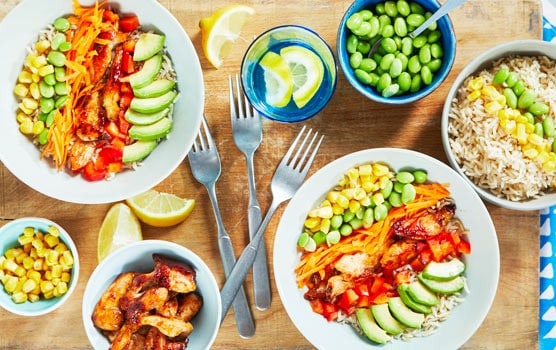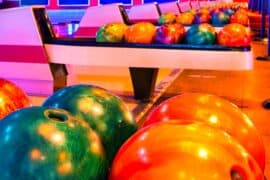Nutrition 101: Healthy Food for Teens
Welcome, caring parents! ? You’re on a mission to ensure your teenagers flourish, and guess what? Their diet is the secret sauce to their growth, mood, and energy levels! As they navigate the choppy waters of adolescence, providing them with the right nutrition is like giving them a map and compass for the journey. Let’s dive into some scrumptious, yet healthy food ideas that’ll turn mealtime into a powerhouse of nutrients for your growing teens!
Understanding Teen Nutrition: What’s on the Plate?
First off, let’s get our facts straight. Teenagers have unique nutritional needs. Their bodies are growing faster than at any time since their first year of life! So what do they need? A mix of proteins, carbohydrates, fats, vitamins, and minerals. A colorful plate, if you will, that not only looks appealing but packs a punch in terms of health benefits.
- Proteins: Think of proteins as the building blocks for your teen’s muscles. Include lean meats, poultry, fish, eggs, and vegetarian sources like beans and lentils.
- Carbohydrates: Carbs fuel their busy days. Opt for whole grains like brown rice, whole wheat pasta, and bread to keep their energy levels steady.
- Fats: The right kinds of fats are essential for brain health. Avocados, nuts, seeds, and olive oil are excellent choices.
- Fruits and Vegetables: These are the natural vitamin and mineral factories. Encourage a variety of colors to maximize nutrient intake.
- Dairy or Alternatives: Calcium and vitamin D are critical for bone development during these growth-spurt years. Choose low-fat or fat-free dairy options or fortified plant-based alternatives.
Smart Snacking for Sustained Energy
Teens are notorious for their constant snacking. Transform this habit into a healthy one by having a stash of nourishing snacks at home. Fresh fruit, yogurt, hummus with veggies, and whole-grain crackers with cheese are all excellent choices that provide essential nutrients and keep hunger at bay between meals.
Balancing the Sweet Tooth
Let’s not forget, teens love their sweets! Balancing their sweet tooth with healthier options can be a win-win. Offer fresh fruit salads, dark chocolate, or smoothies made with real fruit instead of sugar-loaded candies and sodas. This way, you’re not taking away treats; you’re just making them better!
Beverage Basics: Hydration is Key!
Did you know that hydration can affect a teen’s concentration and athletic performance? ? Encourage your teen to drink plenty of water throughout the day. If they’re bored with plain water, jazz it up! Add slices of fruits or a splash of 100% juice for a touch of flavor.
Creating a Teen-Friendly Kitchen
When your kitchen is stocked with healthy options, that’s what your teen will reach for. Make sure to have a variety of fruits, vegetables, whole grains, lean proteins, and healthy fats on hand. Create designated snack areas or bins in the fridge and pantry for quick, grab-and-go options. Your teens are more likely to pick up healthy snacks when they’re easily accessible and ready to eat.
Meal prepping with your teens can also be a fun and educational activity. It’s a wonderful way to spend quality time together while teaching them about portion control and the importance of a balanced diet. Plus, it empowers them to make healthier food choices even when you’re not around!
Remember, the teenage years are a battle between autonomy and dependence, so involving them in the meal planning and preparation process can help them feel more in control of their choices. Together, decide on weekly meals, shop for ingredients, and prepare the dishes. It’s all about making healthy eating a collaborative and enjoyable experience!
The journey towards ensuring your teens embrace healthy eating habits is paved with patience and consistency. By making nutritious foods available and involving your teen in the food selection process, you’re setting them up for a lifetime of good eating habits. Continue reading for even more tantalizing tips on how to keep your teen’s diet varied, delicious, and above all, nutritious. Happy and healthy eating awaits! ?

5 Essential Tips for Parents Preparing Healthy Food for Teens
As a parent, you’re the maestro of your teen’s dietary orchestra. You control the tempo, the rhythm, and the harmony of the foods that go on the family table. Here are five tips to help you conduct a symphony of nutritious eating for your teens:
1. Education is Empowerment
Equip your teens with knowledge about the benefits of eating healthy. Discuss the power of proteins, the vitality of vitamins, and the fabulousness of fiber. The more they understand, the more likely they’ll make smart choices. Accessible information about nutrients and how they affect the body can have a lasting impact!
2. Portion Control: Size Matters
Teens can eat—a lot. But it’s important to talk about portion sizes. Use visual cues, like a fist as a serving of pasta or the palm of a hand for meats, to give them an easy way to gauge portions. And hey, if they’re still hungry, there’s always room for more veggies!
3. Healthy Substitutions: Small Changes, Big Benefits
Adolescence doesn’t have to be about saying no to pizza and burgers. It’s about tweaking recipes to make them healthier. Whole wheat crust, lean meats, and lots of veggies can turn a junk food night into a nutrient-dense party. Getting your teens involved in choosing and preparing these alternatives can make it an exciting challenge rather than a chore.
4. Meal Timing: Regularity Rocks
Encourage your teens to eat at regular intervals to keep their metabolism humming and to avoid overeating. Breakfast is particularly important to jump-start their day—so a hearty bowl of oatmeal or a smoothie packed with fruits can set the right tone each morning.
5. The Social Aspect of Eating
Eating is a social activity; it’s about community and sharing. Involve your teens’ friends in healthy meal preps or themed cooking nights. This not only introduces them to healthy foods in a fun setting but also helps them establish eating habits beyond the family circle.
Building a Balanced Diet: A Meal-by-Meal Breakdown
Let’s put it all together—a practical guide to what a balanced day might look like for your teen:
Breakfast:
Start the day with a nutrient-packed meal. Oatmeal with nuts and berries, eggs with spinach and whole-grain toast, or Greek yogurt with a drizzle of honey and mixed seeds. Each of these choices provides a balance of carbs, protein, and healthy fats to fuel them until lunch.
Lunch:
Whether it’s a packed lunch or a meal at home, aim for a mix of complex carbs, lean protein, and fats. A turkey and avocado wrap, quinoa salad with mixed veggies and chickpeas, or a burrito bowl with brown rice can be both satisfying and healthful.
Dinner:
After a busy day, decompress with a family meal that’s both nutritious and delicious. Grilled fish with a rainbow salad, stir-fried tofu with vegetables and brown rice, or a lean beef and vegetable stew are great options. This important meal should replenish nutrients and satisfy hunger, but not leave your teen feeling sluggish.
Snacks:
For in-between meals, keep those healthy snacks within reach! Blend up a fruit smoothie, slice up some vegetables and dip them in hummus, or munch on some almond butter with whole-grain crackers to keep energy levels up without spoiling the next meal.
Guiding your teen through the world of healthy eating can be a joyous journey. Each meal is an opportunity to nourish not just their bodies but also their minds and spirits. The key is making it tasty, varied, and fun—something the whole family can embrace together. Embrace this guide as a starting point and watch your teen make strides towards a healthier, happier self. Ready, parents? Bon appétit! ???
See more great Things to Do with Kids in New Zealand here. For more information see here
Disclaimer
The articles available via our website provide general information only and we strongly urge readers to exercise caution and conduct their own thorough research and fact-checking. The information presented should not be taken as absolute truth, and, to the maximum extent permitted by law, we will not be held liable for any inaccuracies or errors in the content. It is essential for individuals to independently verify and validate the information before making any decisions or taking any actions based on the articles.




